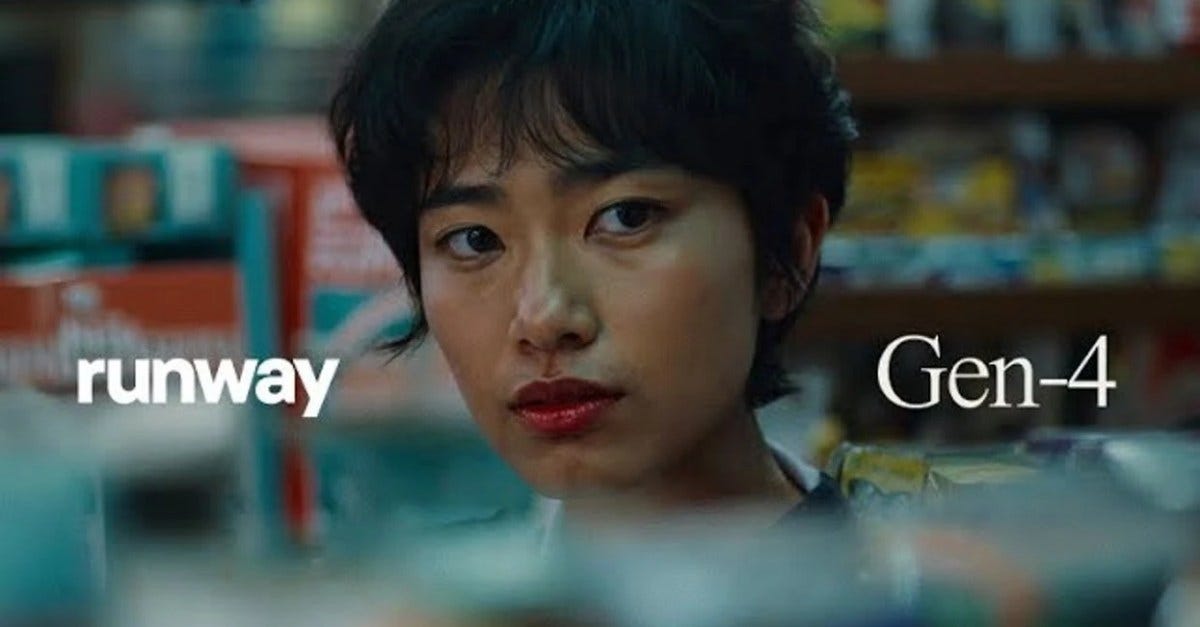Top Beginner’s Guide to AI Video
from Kling to Sora to Gen-4 to Veo and more. The Text & Image to Video Breakthroughs of 2025 📺
Good Morning,
Today we continue our AI learning guides series. This is our first complete guide to text to video and image to video with a full spectrum of tips, resources and rankings of the top players.
Just like we anticipated, 2025 is shaping up to be a significant year for text-to-video innovation in LLMs. While Google’s latest Veo 2 costs a shocking 50 cents per second of video, which adds up to $30 per minute or $1,800 per hour, there are more consumer friendly options. Many new options are emerging in 2025 and we’ll go over all of the best ones.
I asked
of Why Try AI Newsletter to break it down for us. Today’s guide on text-to-video options is one of the biggest guides on visual AI we’ve ever hosted.‘Why Try AI’ Newsletter | By Daniel Nest
Many of our gest guide contributors in Applied AI have Newsletters more appealing for readers who might want to learn how to apply and do things with Generative AI. Daniel also does live workshops and video guides. He has so much bonus content available on Sundays, it’s kind of incredible. Daniel shows why he’s known for visual AI guides and AI news regarding these and other tools.
One of the best funded AI startups in the space, AI startup Runway recently announced its Gen-4. Some of the claims of Runway here are super interesting:
Runway claims that it can generate consistent characters, locations, and objects across scenes, maintain “coherent world environments,” and regenerate elements from different perspectives and positions within scenes.
Gen-4 can utilize visual references, combined with instructions, to create new images and videos utilizing consistent styles, subjects, locations, and more, all without the need for fine-tuning or additional training.
What this demonstrates is text-to-video in the 2020s will likely evolve to ending up producing incredible movies, cinema, YouTube content and new kinds of mixed media in the 2030s. If synthetic video is your thing. This is not a sponsor or affiliate, just breaking news and Gen-4 is far from being fully rolled out yet.
Runway AI is backed by the likes of Salesforce, Google, and Nvidia, offers a suite of AI video tools, including video-generating models like Gen-4. So what are we talking about here?
Demos on X
I can certainly appreciate the realism of what AI video is becoming: (People are chaining Midjourney + Magnific + Runway Gen-4 together:)
The facial expressions here are fairly sophisticated:
Or how about combining Suno (music generation) into the mix as well:
As this guide will show, OpenAI’s Sora is clearly not the only game in town. Daniel says of Runway Gen-4 that as of early April it’s just rolling out now, the "consistency" feature isn't live, and it's currently just image-to-video, no text-to-video.
Best of the Nest 🐣 with Daniel
Here Are My Go-To AI Tools
“Help Me Help You.” How to Get AI Chatbots To Prompt Themselves.
Minimum Viable Prompt: Your Cure for AI Overwhelm
The Skeptical Writer's Guide to AI
If applying AI is part of what you are looking for, Why Try AI is a very helpful resource.
🦉 Try Kling AI | Try Dream Machine by Luma Labs | Try Hailuo AI | Try Pika Labs | Try Hunyuan Video (Tencent) | Try Genmo Mochi AI - try these tools for yourself after reading this guide, and so many more inside. The way Daniel breaks down each model and their capabilities is obviously the result of dozens of hours of tinkering and experience with each one.
💡 Trending AI Guides 🗺️
These are some of the most popular read guides of last few months on AI Supremacy:
How to use NotebookLM for personalized knowledge synthesis
This guide is beyond epic.
Get full-access for less than $2 a week for all my best content.
This guide will also features a video guide by Daniel.
The “vibe coding” of cinematography is one of the fastest moving areas in multimodal large language model innovation in 2025.
Ranking the best Video AI tools, price, notes, and in-depth description.
Discover the best tools for AI video and best practices of applying them. Creativity is changing with these tools and it’s hard to imagine where it leads.
Finally let’s get to the guide:
A Complete Beginner’s Guide to AI Video
By
February, 2025. Learn more about Daniel.🦕 Nest is Best guys! 🥚 Let’s go:
Keep reading with a 7-day free trial
Subscribe to AI Supremacy to keep reading this post and get 7 days of free access to the full post archives.






